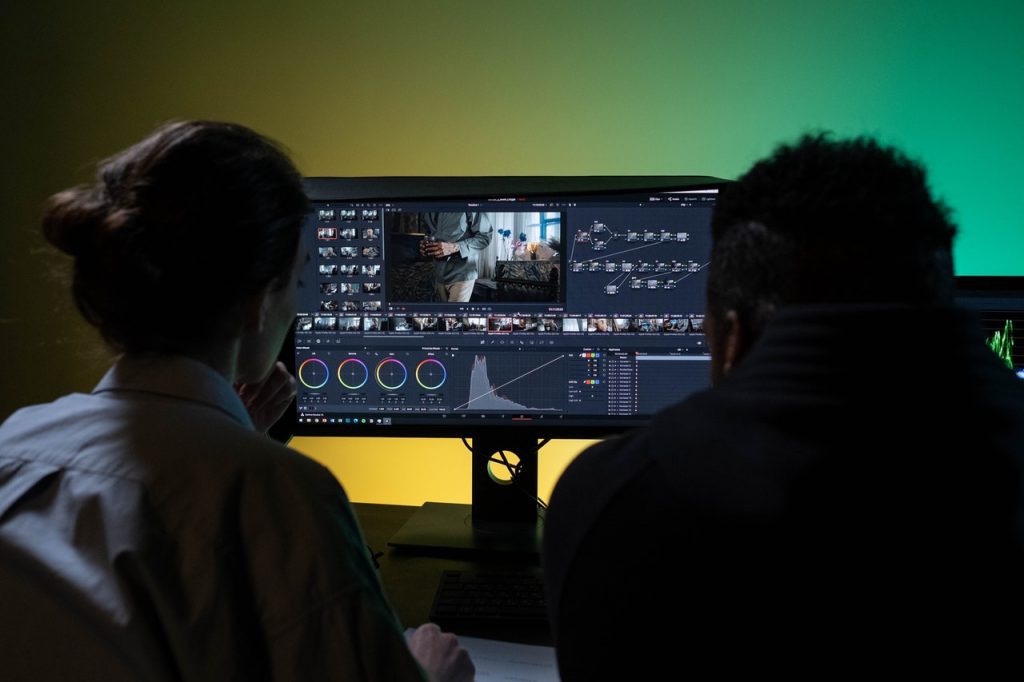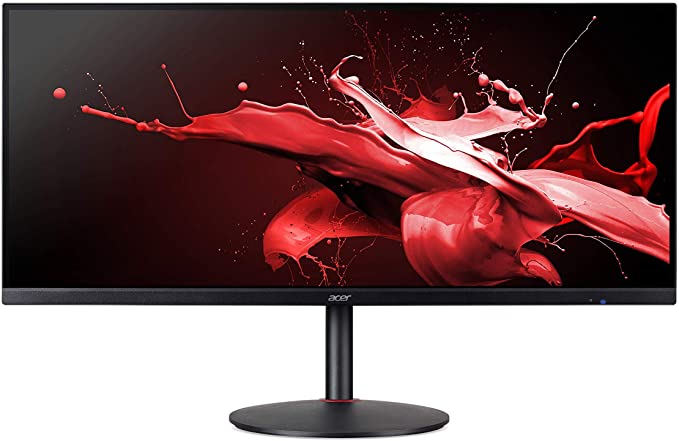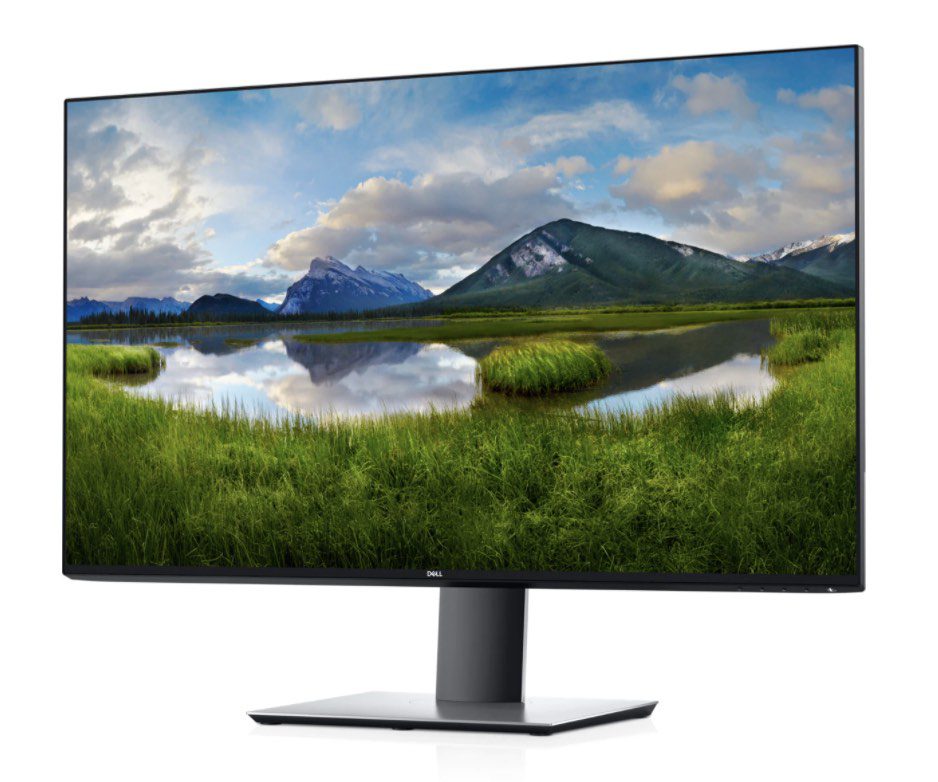These days, people are crazy for 4K. From movie buffs to hardcore gamers, the transition from 1080p to 4K is full steam ahead. And while there’s no doubting the quality of 4K, is it necessary right now? Does the average videographer need a 4K monitor for video editing? The answer is more complex than you might think.
First, let’s make sure we’re on the same page with the basics.
What is 4K?
Don’t worry, I’ll keep this section brief.
4K represents the resolution of the screen. Resolution means pixels. And pixels are essentially tiny dots of color that together, make up an image.
So, 4K refers to the number of pixels a screen has. Specifically, the number of pixels wide. A 4K screen, for example, is 4,096 pixels wide by 2,160 pixels tall. Multiply those numbers together for a count of the total pixels. Here, that number is 8,847,360 pixels.
For comparison, let’s look at the original HD – 720p. A 720p screen will have 1,280 by 720 pixels, for a total of 921,600 pixels. In comparison to a 4K screen, a 720p screen has just 10% the number of pixels a 4K screen has.
It’s important to remember that screen size has nothing to do with resolution. It’s all about how many pixels are packed into the screen itself. The more pixels a screen has, the more color and light variation there can be. AKA, resolution.
If you’re having trouble understanding how pixel count and resolution relate, think about this. Imagine you are painting a dog. And instead of traditional brush stroke methods, you decide to try ‘Pointillism‘. How realistic would your dog look if you could only use one, massive dot? How about 10 smaller dots? 100? 1,000,000? As you can see, the more dots, the finer the detail.
You can find more information on resolution, along with pixel counts for all high definition screens, in my post on the 3 important specs to know when buying a monitor.
Now that we have a basic understanding of how 4K compares to earlier HD models, let’s move on to the topic at hand. Do you actually need a 4K monitor for video editing?

Do I Need a 4K Monitor for Video Editing?
Whether or not a video editor needs 4K depends on several factors. While there is a ton of hype behind 4K, the average viewer won’t be able to tell the difference. In my mind, here are 5 main factors to consider when asking yourself if a 4K monitor for editing video is worth the cost.
1. Making videos is your job or passion.
If your paycheck relies on your video editing, you should probably be invested in 4K. And, if making videos brings you significant joy in life, you might consider it as well. However, it is totally possible to be a hobbyist video editor and not have a 4K editing monitor right now. In the second scenario, it really is about personal preference. This brings us to #2…
2. You’re a stickler for image quality.
If grainy footage, washed out colors and soft edges ruin watching videos for you, 4K is likely good for you. This point is most understandable if someone is currently working on a 720p video editing monitor. But, some video editors just enjoy putting stories together. Others are highly critical of the actual image. If you fit into the second category, go for the upgrade.
3. You own an expensive camera kit released within the past 5-7 years.
People who have spent hard earned cash on an expensive camera kit released within the last half decade or so should probably be editing on a 4K monitor. Why spend all that money on a Sony a7sii if you’re working on a 1080p monitor? Sure, there are reasons to purchase a high-end camera kit outside of resolution. But resolution is a major piece of that cost.
Before upgrading to a 4K monitor for video editing, make sure you understand color spaces. Specifically, read up on the difference between sRGB and Adobe RGB.
4. You use your editing monitor to watch Ultra HD movies.
If you’re using the same monitor to edit video and to watch your favorite Ultra HD movies, go for the upgrade. And if you make your house guests watch stuff on anything less than a 1080p monitor, please go upgrade now.
4K is better resolution than 1080p. But if we’re being completely honest, it can often be hard to tell the difference. Check out this awesome YouTube video where Matti Haapoja compares 4K and 1080 footage. The results may surprise you.
Now, let’s look at the other side. Let’s talk about who probably doesn’t need a 4K monitor for video editing.
You Probably Don’t Need a 4K Video Editing Monitor If…
4K is great. But it’s not necessarily for everyone. Here are a few scenarios where passing on a 4K computer monitor makes sense.
1. Making videos is just another hobby you do occasionally.
If you’re editing one video per year, you can probably pass on upgrading your video editing monitor to something 4K. Your vacation videos will likely be just as (un)interesting in 4K as they are in 1080.
2. You don’t care too much about image quality.
I know several hobbyist video editors who just love stories. They love telling them, hearing them and watching them. But when it comes to understanding the details of video itself, their eyes glaze over. And that’s okay! There’s room for everyone here. If you fit into this category, you can probably get away with your old 1080 monitor. However, just keep in mind that image resolution may be having a larger influence on your experience than you consciously realize.
3. Your videos aren’t shot in 4K resolution.
Videographers shooting with gear that predates 4K likely don’t need a 4K monitor to edit footage. But if you do end up upgrading one (monitor or camera), you should upgrade the other too.
4. You don’t buy the 4K hype.
Is 4K all hype? Maybe, but I don’t think it’s all hype. 4K is objectively better. Even if you want to debate whether the improvement in resolution matters, most 4K monitors give you more color space coverage and therefore, more accurate colors. That in and of itself is worth upgrading for. At least to me. But in most cases, 1080p resolution is just fine. Check out the video I embedded above this section for a video comparison.
So… Should You Upgrade to a 4K Video Editing Monitor?
Recommending whether or not someone should upgrade to a 4K video editing monitor is not as easy as you might think. There are definitely advantages to a 4K monitor over a 1080 model. However, the advantage might actually be in areas like color space coverage as opposed to straight resolution.
4K is becoming the standard and if you are someone who wants to keep up with the industry, upgrading to 4K makes sense. For the average video editor, I’m not convinced a 4K monitor is 100% necessary. Decide what is important to you and proceed from there!
Now that we’ve gone through a few reasons for and against a 4K editing monitor upgrade, let’s briefly get into some monitors. Here are three budget-friendly 4K monitors for video editing worth considering.
If you’d like to learn about more options, you can check out the following posts:
- 10 Best Video Editing Monitors
- 10 Top Monitors for Editing Photo
- My 10 Favorite Photo, Video and Graphics Monitors
3 Excellent Budget-Friendly Monitors for Editing 4K Video
Acer Nitro XV340CK – $399.99
Video editors looking to upgrade to 4K on a tight budget should look no further than this model from Acer. At just $399.99, the Nitro XV340CK is the ultimate steal. Plenty of color space coverage and an IPS display panel make this a top pick for budget-friendly 4K monitors.
BenQ PD3200U 4K Monitor – $699.99
This monitor is such a beast and it’s only $699.99. You get 100% sRGB coverage, plenty of connection ports and a 32-inch 4K screen for well under $1,000. Any beginner to intermediate level video editor will be delighted with this upgrade.
Dell Ultrasharp U3219Q – $873.05
For just a little more money you can upgrade your video editing workstation to this option from Dell. The Ultrasharp is just what it says – ultra sharp. You get a whopping 99% of sRGB and 95% of DCI-P3 for just under $900 (at the time of this writing in May 2021).



